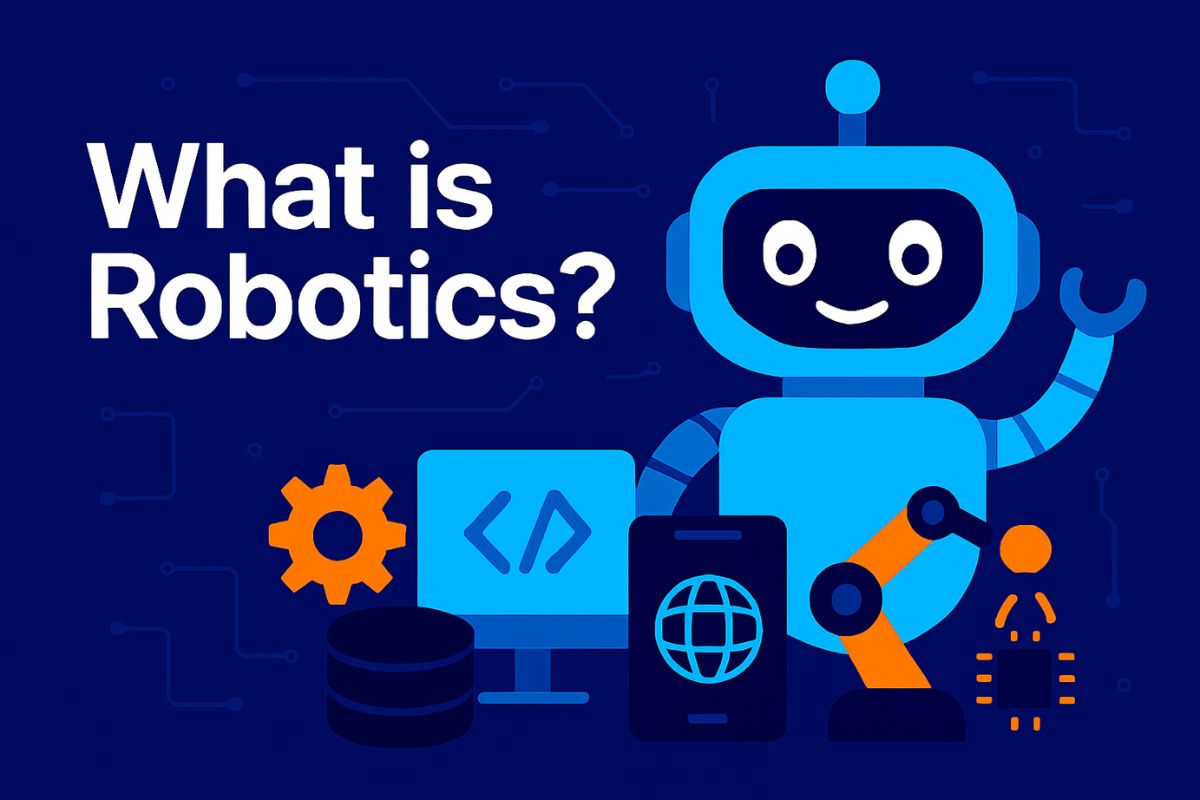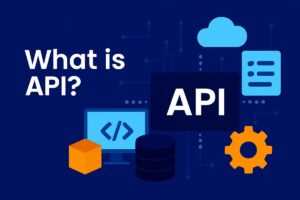Robotics is the interdisciplinary field that focuses on designing, building, and programming intelligent machines known as robots. These machines can sense, think, and act in real-world environments with varying degrees of autonomy. This 2025 guide explores what robotics is, its components, types, real-world applications, career paths, and the future of human-robot collaboration.
From vacuuming our homes to performing surgeries and assisting in disaster zones, robots have become a vital part of modern life. Robotics, once a fantasy of science fiction, is now transforming industries, homes, and societies across the globe. But what exactly is robotics, and why is it such a big deal in 2025?
In this comprehensive guide, we’ll cover everything you need to know about robotics — its definition, history, components, types, applications, career opportunities, and cutting-edge trends. Whether you’re a student, tech enthusiast, or professional, this blog will give you a strong foundation in the exciting world of robotics.
What is Robotics?
Robotics is the science and engineering of designing, building, and operating machines—called robots—that can perform tasks automatically or with minimal human intervention.
Technical Explanation
Robotics combines several disciplines such as mechanical engineering, electrical engineering, computer science, and artificial intelligence. It involves the integration of sensors, actuators, software, and control systems to create intelligent machines capable of interacting with their environment.
Short History of Robotics
- 1921: The word “robot” was first introduced by Karel Čapek in his play R.U.R. (Rossum’s Universal Robots).
- 1940s: Isaac Asimov published the famous Three Laws of Robotics.
- 1961: The first industrial robot, Unimate, was installed in a General Motors factory.
- 2000s: Robots began entering households (e.g., Roomba vacuum).
- 2020s: Integration with AI, IoT, and real-time learning has redefined robotics.
For more history, check Wikipedia – Robotics.
Key Components of a Robot
Mechanical Structure
The physical form or chassis of the robot—arms, wheels, legs, or humanoid bodies.
Sensors & Perception
Allow robots to understand their environment (e.g., cameras, ultrasonic sensors, LiDAR).
Actuators & Motors
These convert electrical energy into movement—moving parts of the robot like arms or wheels.
Control Systems
Embedded processors and software that process sensor data and control behavior.
Software & Programming
The brains of the robot: includes firmware, operating systems like ROS (Robot Operating System), and high-level AI programs.
AI & Machine Learning
Enable robots to adapt, learn, and make decisions based on data. Read more: What is Artificial Intelligence?
Types of Robots
| Type | Description | Example | Industry | Autonomy |
|---|---|---|---|---|
| Industrial Robots | Factory automation | FANUC arms | Manufacturing | Medium |
| Service Robots | Assist with tasks at home/work | Roomba, Pepper | Hospitality, Homes | Medium |
| Medical Robots | Surgical and patient support | Da Vinci Surgical Bot | Healthcare | High |
| Military Robots | Tactical and defense tasks | PackBot, Drones | Defense | High |
| Humanoid Robots | Human-like interaction | Sophia, Ameca | Education, R&D | High |
| Cobots | Work alongside humans | UR5 Cobots | Warehouses, Auto | High |
| Autonomous Vehicles | Self-driving systems | Tesla, DJI drones | Transport, Delivery | High |
Real-World Applications of Robotics
Healthcare
- Robotic surgeries (minimally invasive)
- Elderly assistance robots
Manufacturing
- Welding, assembly, and packaging robots
- Quality control with machine vision
Logistics & Delivery
- Warehouse bots (e.g., Amazon Robotics)
- Drone-based last-mile delivery
Agriculture
- Seeding, watering, and pest control robots
- Crop monitoring via AI-powered drones
Retail & Service
- Inventory checking bots in supermarkets
- Food delivery and concierge bots
Defense & Rescue
- Bomb defusal bots
- Surveillance robots and AI drones
Education
- Used in STEM education for hands-on learning
- University research and prototype labs
Explore more: IEEE Robotics and Automation Society
How Robotics Works (Simplified Process)
- Sense the environment through sensors
- Think by processing inputs using software/AI
- Act using actuators to perform physical tasks
- Learn via feedback and machine learning
- Interact safely with humans or other robots
Future Trends in Robotics (2025 & Beyond)
Embodied AI & Simulation Learning
Robots now train in simulated environments using AI—see NVIDIA Robotics Research
Cobots and Human-Robot Teams
Collaboration, not replacement — robots assist human workers rather than replace them.
Robot-as-a-Service (RaaS)
Subscription-based robotics solutions for small businesses.
K-Humanoid Alliance (South Korea)
A national initiative to develop general-purpose humanoid robots.
Ethical and Legal Concerns
- Data privacy, surveillance, autonomy
- Compliance with Asimov’s Laws and modern ethics
Read more: What is Machine Learning?
Robotics vs Automation vs AI
| Feature | Robotics | Automation | AI |
| Involves Hardware? | Yes | Not always | No |
| Task Focus | Physical task execution | Repetitive logic flows | Intelligence + learning |
| Examples | Drones, Cobots | Email filtering | ChatGPT, recommendation engines |
How to Start a Career in Robotics
Skills Needed
- Coding (Python, C++, MATLAB)
- Electronics and mechanics
- Robot simulation tools (Gazebo, Webots)
- AI & ML basics
Courses & Certifications
- MIT Robotics MicroMasters
- Google Robotics & ML Courses
- Udemy & Coursera beginner kits
Build Your Portfolio
- Arduino or Raspberry Pi projects
- Join GitHub repos and contribute
- Participate in open-source robotics forums
Communities & Competitions
- RoboCup, FIRST Robotics
- IEEE Student Chapters
- Hackathons & Robotics Clubs
Pros and Cons of Robotics
| Pros | Cons |
| Efficiency & productivity boost | High cost of development |
| Reduces risk in hazardous tasks | Job displacement concerns |
| 24/7 operation | Ethical and legal challenges |
| Sparks innovation | Power dependency, maintenance issues |
Conclusion
Robotics is no longer science fiction — it’s here, evolving, and making the world smarter, safer, and more efficient. Whether you want to build, program, or simply understand robots, this is the perfect time to start. Begin your robotics journey today, one project at a time.
FAQs
1. What is robotics in simple words? It’s the science of creating intelligent machines (robots) that can perform tasks automatically or with little human help.
2. How are robots different from AI? Robots are physical machines; AI is the software or intelligence that may run inside them.
3. What are the main types of robots? Industrial, service, medical, military, humanoid, cobots, and autonomous vehicles.
4. Is robotics a good career in 2025? Absolutely. Robotics is booming with demand in healthcare, manufacturing, logistics, and research.
5. Do I need to code to work in robotics? Yes, basic coding (Python/C++) and logical thinking are essential.
6. What industries use robotics today? Healthcare, agriculture, defense, retail, logistics, and manufacturing.
7. What is the future of robotics? The future lies in smart, collaborative robots powered by AI and embedded learning systems.


